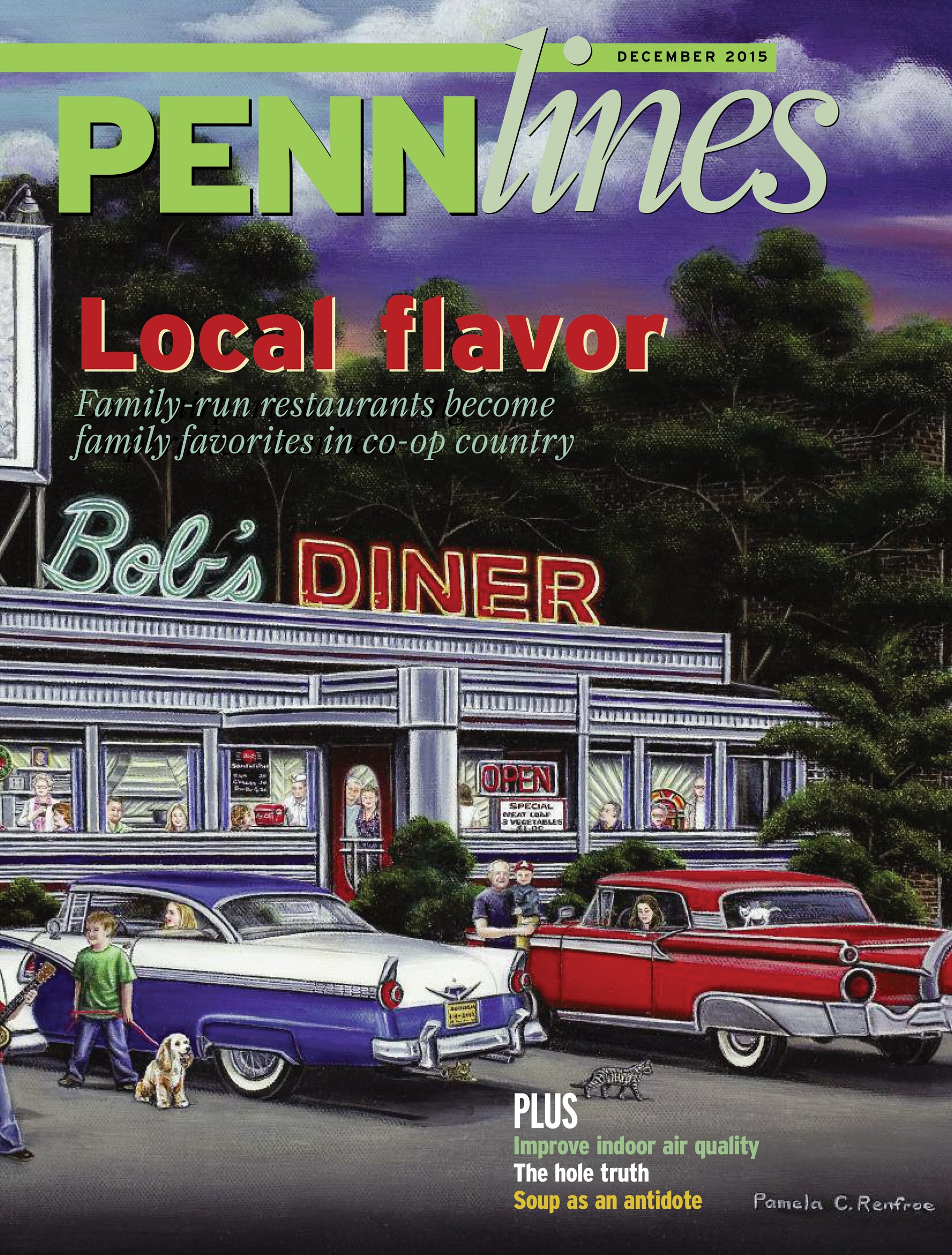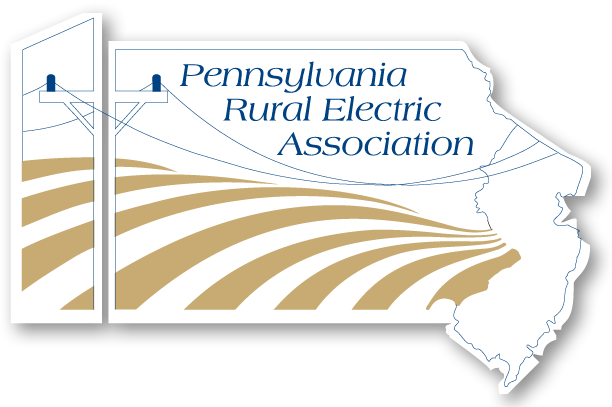News • Ideas • Events
EDITOR’S DESK
Christmas Cooperation
This month’s First Word column (on page 4) reminds me of one of my favorite Christmas specials, “The Year Without a Santa.” Not that the 1974 classic had anything to do with rising energy prices, but it showed how Mother Nature can play a key role in Christmas weather.
The column discusses Winter Storm Elliott, which took place on Christmas Eve in 2022 and continues to have lingering implications for our grid. With rolling blackouts in several states, the severe cold-weather event showed just how vulnerable we are when Mother Nature’s not happy.
The Christmas special took a playful turn on the seasons – but showed us just how divided we can be about something as fundamental as the weather. In the story, Mother Nature mediates a bitter feud between Heat Miser and Snow Miser, two brothers so entrenched in their positions that they’d rather let Christmas die than give an inch to the other side.
On the heels of the longest government shutdown in history, this may sound familiar. Unfortunately, it was not a TV Christmas special. Instead, the shutdown showed us our real-world divisions have real-world consequences, like delayed paychecks, suspended food assistance, and imperiled home heating aid—just ahead of the holiday season.
These divisions show up in how we approach energy policy. Like the bickering Miser brothers, each administration seems determined to undo its predecessor’s work when it comes to energy and climate priorities. This windshield wiper effect, swinging wildly from left to right every four to eight years, has left us without a coherent national energy strategy – and a vulnerable grid.
Winter Storm Elliott nearly brought the grid in our region to a collapse – Mother Nature’s warning to us to find a compromise before it’s too late. A functioning grid needs long-term planning and certainty that survives political transitions. It needs Heat Miser and Snow Miser to recognize that their endless battle threatens everyone. We need that compromise now, before Mother Nature delivers another harsh lesson.
When she intervened in the Christmas special, Mother Nature got the brothers to cooperate: Snow Miser got a day of cold in Southtown, Heat Miser got a day of warmth at the North Pole – and Christmas was saved. Cooperation – something electric cooperatives know how to celebrate in any season. Happy holidays.
PETER A. FITZGERALD
EXECUTIVE EDITOR

IT'S GLAMOROUS!
Seven glamping sites set to open in Pa. state parks
Pennsylvania residents and visitors will have the opportunity to take their outdoor fun to a new, fancier level in 2026 when 61 glamping sites open in several state parks.
Glamping, short for “glamorous camping,” features sites with safari-style tents, equipped with real beds, heat and air conditioning, lighting, and outdoor seating.
“This new offering is another way we’re ensuring that our state parks remain welcoming and enjoyable for all Pennsylvanians,” said Cindy Adams Dunn, secretary of the state Department of Conservation and Natural Resources (DCNR).
Among the state parks currently taking glamping reservations for 2026 are Hills Creek, Laurel Hill, Pymatuning, Codorus, French Creek, Hickory Run and Promised Land. An eighth park is expected to be added to the glamping list in 2027.
In related news, DCNR is investing $16 million to upgrade shower house and restroom facilities at three state parks: Gifford Pinchot, Lackawanna and Ricketts Glen. Construction is scheduled to begin in September 2026 and last through early 2028, during which time the campgrounds will be closed. Meanwhile, the parks’ day-use areas will remain open to the public.

GOING GLAM: Several glamping sites throughout Pennsylvania are set to open in 2026. Glamping is short for “glamorous camping” and features sites with safari-style tents equipped with beds, among other amenities.
SETTING AN EXAMPLE
Pennsylvania leans nation with most preserved farms
Pennsylvania now leads the nation after preserving more than 6,600 farms and 650,000 acres of farmland. The milestone was reached in October.
“A farm is the highest and best use of land,” state Agriculture Secretary Russell Redding said. “When farmland is sold to become warehouses or housing developments, it’s gone forever. By preserving high-quality farmland, we’re keeping a promise to future generations that Pennsylvania will continue to feed our nation and strengthen our economy.”
Strewn across 658,681 protected acres, Pennsylvania’s 6,621 protected farms stretch across 58 counties as part of the Commonwealth’ s Farmland Preservation Program, which was established in 1988. To date, Pennsylvania has invested more than $1.78 billion in partnerships with county and local governments to safeguard agricultural land from sprawl and development.
Agriculture is a major cornerstone of Pennsylvania’s economy, contributing $132 billion annually and supporting nearly 600,000 jobs.
SAFETY FIRST
Boaters required to wear life jackets through April 30
As waters reach freezing temperatures in the coming months, boaters in Pennsylvania are required to wear a U.S. Coast Guard-approved life jacket while in boats under 16 feet long or on any kayak, canoe or paddleboard. The requirement is in place until April 30, 2026.
According to state data, nearly 80% of all boating fatalities occurred because boaters were not wearing life jackets. Since the mandatory life-jacket law was enacted in 2012, the Pennsylvania Fish and Boat Commission has seen a nearly 50% decrease in boating fatalities during cold-weather months.
DRYING UP
More than two dozen counties placed under drought watch
A lack of rain this past summer has prompted the Pennsylvania Drought Task Force to place more than two dozen Pennsylvania counties under a drought watch.
Impacted counties are Beaver, Bradford, Butler, Cambria, Cameron, Clarion, Clearfield, Clinton, Crawford, Elk, Erie, Forest, Indiana, Jefferson, Lawrence, Lycoming, McKean, Mercer, Potter, Schuylkill, Somerset, Tioga, Venango, Warren and Washington.
During a drought watch, residents are encouraged, but not required, to reduce their water use by 5% to 10%. Drought declarations are based on four factors: precipitation, stream flows, groundwater levels and soil moisture.

TIME LINES — December 2015
Ten years ago, Penn Lines Lines cchronicled how family-run restaurants have become family favorite destinations in co-op country. The cover story featured three families — the Otts, the Dudkins and the Frys, who still own and operate Fry Brothers Turkey Ranch in Lycoming County, which is served by Tri-County Rural Electric Cooperative (REC). The restaurant is popular for its family friendly atmosphere, a reminder that rural cuisine offers more than just great food.
Also in this issue


